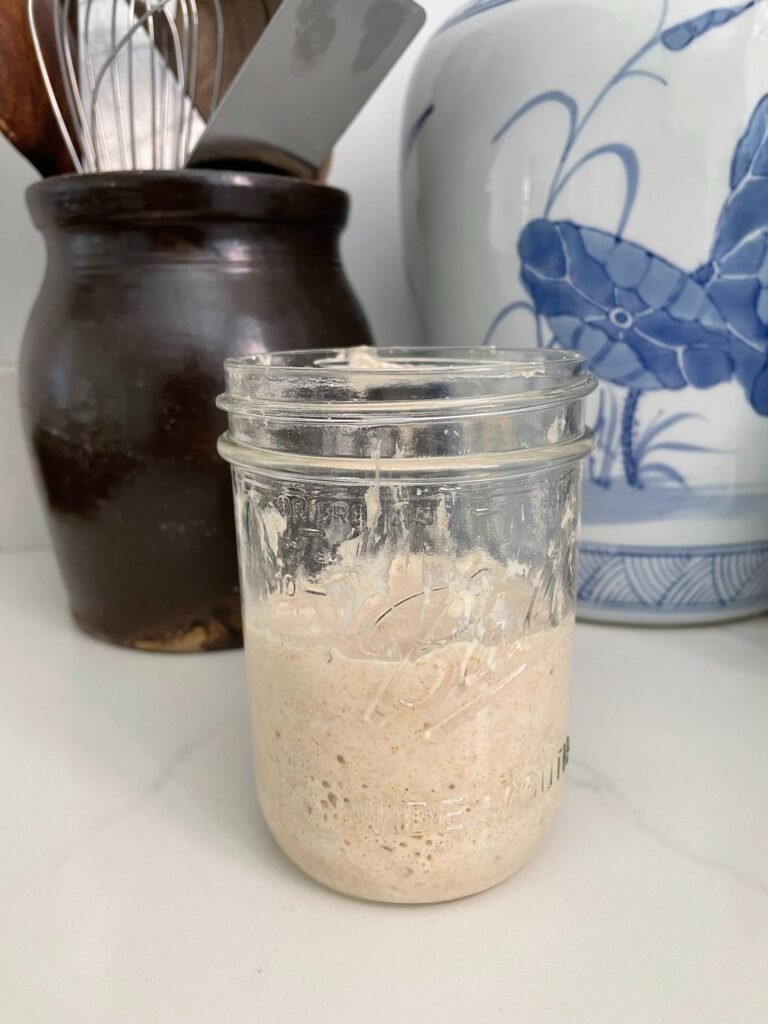Sourdough Starter Discard
Sourdough baking is often synonymous with the concept of a Sourdough Starter Discard. If you’re a new sourdough baker, the idea of discarding—or throwing away—a portion of your sourdough starter might feel wasteful. However, the discard process is a fundamental part of maintaining a healthy, vigorous starter. Let’s take an in-depth look at the importance of discarding sourdough starter and ways to make the most out of this seemingly wasteful process.

Understanding Sourdough Starter
A sourdough starter is a mixture of flour and water that captures wild yeast and bacteria from the environment. These microorganisms feed on the sugars in the flour, producing carbon dioxide (which helps your bread rise) and lactic acid (which gives sourdough its characteristic tang).
Why Discard Sourdough Starter?
The primary reason we discard a portion of the starter during feedings is to maintain a balanced ratio of flour (food) to the yeast and bacteria population.
- Feeding Balance: The microorganisms in your starter are continuously eating the sugars available in the flour. If the starter isn’t discarded regularly, the yeast and bacteria can quickly outstrip their food source, leading to a less active starter, poor rising bread, and undesirable flavors.
Maintaining Starter Size: Without discarding, if you keep feeding your starter, it would grow exponentially, requiring larger quantities of flour for each feeding and quickly becoming unmanageable in size.
Optimal Yeast Activity: Discarding ensures that the most active yeast cells, which are the ones that have recently been fed, dominate your starter. Older yeast cells that may be less active are removed in the process, promoting the overall vitality of your starter.
Making the Most of Your Discard
Discarding doesn’t have to mean waste. Here are some creative ways to use your discarded starter:
Sourdough Pancakes and Waffles: Discarded starter can be used to make delicious breakfast items like pancakes and waffles, lending them a delightful tang and fluffiness.
Sourdough Crackers: These can be seasoned with your favorite herbs and spices for a savory snack.
Sourdough Flatbread and Pizza Crust: The discard adds a depth of flavor to these favorites.
Responsible Discarding
If you don’t bake often and find you’re discarding more than you use, you may consider maintaining a smaller starter, switching to a lower-maintenance starter schedule (such as refrigerating your starter and feeding it less frequently), or even drying and freezing your starter for long-term storage.
While it may initially seem counterintuitive or wasteful, discarding is a vital step in maintaining a healthy, vigorous sourdough starter. It ensures your yeast and bacteria populations are in balance and that they always have sufficient food to remain active. By understanding the reasons behind this process and finding innovative ways to use your discard, you can make the most out of your sourdough journey. Remember, a well-maintained starter is the foundation of a great sourdough loaf!
Pingback: Sourdough Discard Banana Bread Recipe - sourdoughsavvy.com